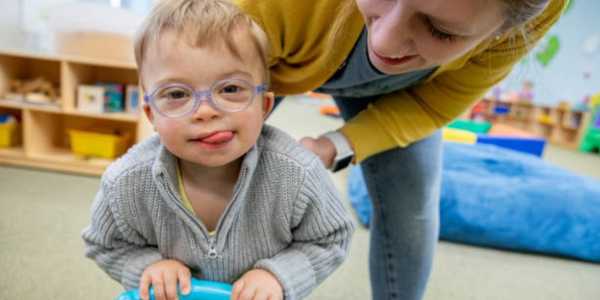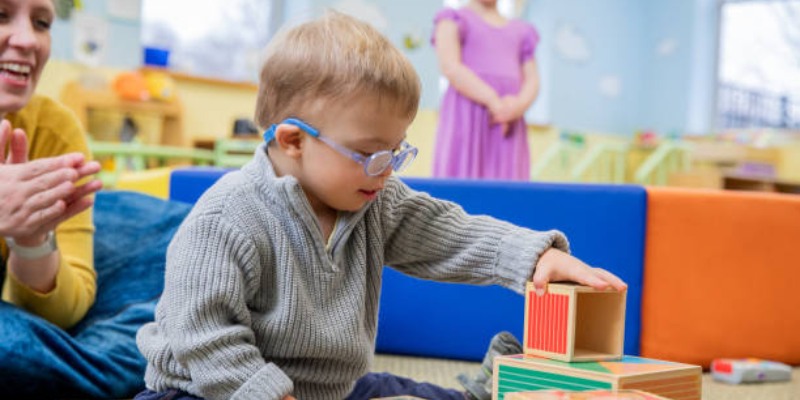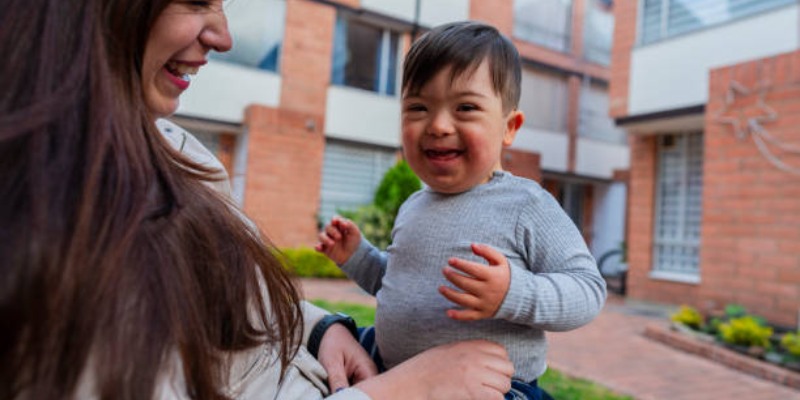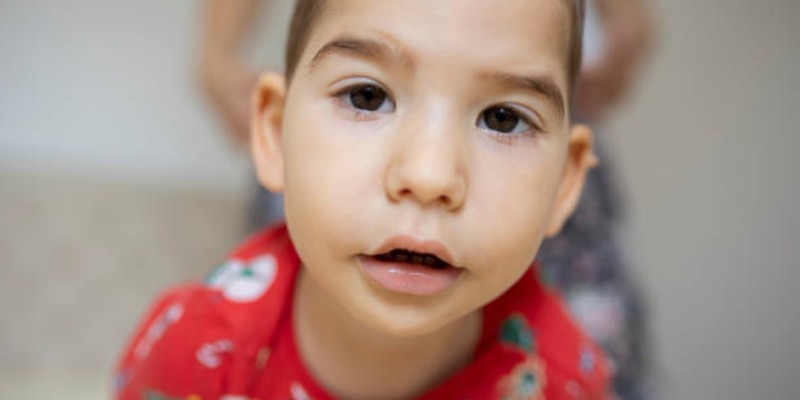How To Spot Early Signs Of Autism In Babies

Many parents feel worried when they notice their baby does not respond in the same way as other babies. Sometimes they can be an early sign of autism spectrum disorder (ASD). It is wise to watch for these signs and know what is normal and what may need attention.
What Is Autism
Autism is a developmental condition that affects how a child interacts, communicates, and learns. According to the Centres for Disease Control and Prevention (CDC) , 1 in 36 children in the United States has been identified with Autism. Early signs often show up before age 2, but many parents do not notice them until the child is older. Spotting early signs helps a family seek early intervention services, which can aid the child in developing better social and learning skills. Here are some signs to look out for.
Lack Of Eye Contact
Most babies begin to look at their parents' faces within the first few months. If a baby does not make eye contact during feeding or while being spoken to, it might be an early sign to watch. Babies with early signs of Autism may look through people instead of at them. Eye contact is a simple but powerful way to check if a baby is connecting with people around them.

Limited Response To Name
By the time babies are 6 to 12 months old, they typically respond to their name when called. A baby who does not turn their head or look when their name is called many times might need to be checked. Sometimes, hearing problems can cause this, but if hearing is normal, it may be a sign of Autism. The well-known autism advocacy organisation Autism Speaks lists limited response to name as one of the early red flags for Autism.
Delayed Babbling Or Talking
Babies love to make sounds. Most babies start to babble by 6 months and say simple words like "mama" or "dada" by their first birthday. If a baby does not babble or uses very few sounds, this may indicate a delay in speech and language development. Many children with Autism have delays in speech and need speech therapy to help them communicate better.
Unusual Repetitive Behaviours
One common early sign is repetitive movements or actions. Babies may flap their hands, rock their bodies, or spin in circles often. While some movements are regular for young children, doing them for long periods or in stressful situations can be a sign. Watch if the baby repeats the same action over and over in a way that seems unusual.
No Interest In Playing With Others
Most babies like playing peekaboo or other simple games by their first birthday. They may smile, giggle, and enjoy these interactions. A baby who does not show interest in playing with others or does not copy simple actions, such as clapping, may require more observation. Children with Autism sometimes prefer to play alone and may not show much interest in shared activities.
Difficulty Understanding Or Using Gestures
Babies use gestures to share what they want. Waving goodbye, pointing to a toy, or raising arms to be picked up are all everyday gestures. Babies who do not communicate or exhibit behaviours by 12 to 15 months may be at risk for developmental delays. Understanding and using gestures are essential for child development.

Trouble With Changes In Routine
Many babies and toddlers like routines, but children with Autism can be susceptible to changes. They may become upset over minor changes, such as a new bedtime routine, a different food, or new clothes. If a baby shows unusual distress during minor changes, it can be helpful to note this and consult a paediatrician.
Unusual Reactions To Sounds Or Sights
Some babies with Autism may react strongly to specific sounds or sights. They may often cover their ears, avoid certain lights, or stare at spinning objects for extended periods. Overreacting or underreacting to sensory input is a sign to watch. Sensory issues are common in children with Autism and can affect daily life.
How Early Intervention Can Help
According to Autism Speaks, early intervention programs help children develop communication, social, and daily living skills through speech therapy, occupational therapy, and special education. Parents can also support learning at home by playing, reading, and using simple games.
Families should never feel guilty or afraid to ask questions about their child’s development. It’s always better to check early than to wait, as early help gives children the best chance to grow and reach their full potential.
Keep reading to discover practical, easy-to-follow strategies you can start today, plus learn how expert guidance and proven programs can further support your family's journey.
How To Support Your Baby’s Development At Home
1. Face-to-Face Interaction
Sit at your baby’s eye level when playing or feeding. Smile, use exaggerated facial expressions, and wait for your baby to look at you before continuing an activity. This encourages connection and attention naturally.
2. Name Response Practice
Use your baby's name during positive moments. For example, call their name gently when you have their favourite toy or snack ready. If they look, praise them warmly. Repeat daily to build name recognition.
3. Joint Attention Games
Point to interesting objects while saying, "Look!" and wait for your baby to follow your gaze. When they do, show excitement. This helps teach shared focus, an early social skill often delayed in Autism.
4. Encourage Gestures
Use simple gestures, such as waving, clapping, or raising your arms, to indicate "up." Model these gestures consistently during daily activities and gently assist your baby's hands if needed.
5. Imitation Play
Babies learn by copying. Clap your hands, tap a table, or make funny sounds, and wait for your baby to imitate you. Celebrate any attempt they make.
6. Use Simple Language Often
Speak slowly using clear, simple words. Narrate what you are doing (“Mama is giving you milk”) to encourage language exposure and help your baby connect words to actions.
7. Sensory Breaks if Needed
If your baby seems overwhelmed by noise or lights, create a quiet space with soft lighting and minimal distractions where they can calm down before returning to activities.
8. Daily Routines with Flexibility
Predictable routines help your baby feel secure and safe. Build in short playtimes and reading together daily, but remain flexible to avoid Stress if plans change.
These steps do not replace professional help, but can help build the necessary social and communication foundations while waiting for evaluations, allowing your baby to progress in a warm, loving environment.
When To See a Specialist
Seeing one of these signs once does not mean a baby has Autism. Some babies may grow at a different pace. But seeing many of these signs together, or noticing that they continue over time, should be taken seriously.
Parents should consult a doctor if they are concerned. Doctors can perform a simple screening test to detect early signs of Autism. If needed, the child may be referred to a developmental paediatrician or child psychologist for further evaluation. Early testing helps families start the right help programs early.

Find Support And Take Action
Raising a child with Autism can be hard, but help is out there. There are numerous support groups, local centres, and online resources available for families. The Autism Society offers support and information for parents who want to learn more.
Families should remember that they are not alone. Many other parents have faced similar worries and found ways to help their children succeed. With love, patience, and the right help, children with Autism can grow, learn, and thrive.
Sources:
CDC: https://www.cdc.gov/ncbddd/autism/facts.html
Autism Speaks: https://www.autismspeaks.org/signs-autism
Autism Society: https://autismsociety.org/








